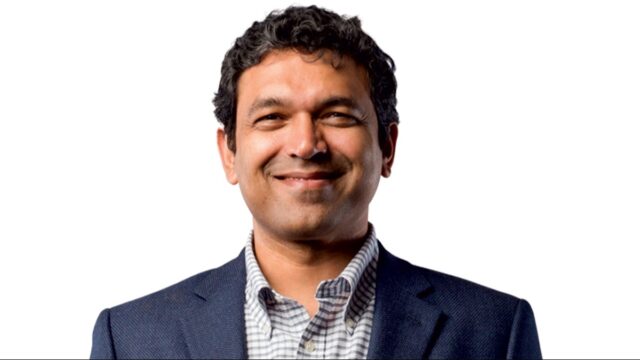In the intricate world of venture capital, a critical aspect that is often overlooked is its dual nature of a two-sided marketplace. This ecosystem is not just about the founders, but equally about the limited partners (LPs) who back the general partners, or the venture capitalists (VCs), and indirectly fund all the risk-taking. While much has been discussed about the founder side of the equation, the LPs’ perspective remains less explored, particularly in the Indian start-up landscape. The ecosystem’s Achilles heel, arguably, is the scepticism of global LPs born of the perceived lack of a predictable playbook for exits and liquidity for their investments.
The venture fund LP base (in absolute dollars) is dominated by long-term capital bases managing perpetual capital. These would be institutions like university endowments, charitable endowments, pension funds, and, more recently, large family offices. All of them want to partake in the future of innovation and technology through the venture asset class. Given the scale of inherent risk in this asset class, allocations are usually in single-digit percentages of their total corpus. VCs are likely to lose a majority of their invested portfolio; in innovation financing and backing first-time entrepreneurs, this is a feature, almost by design, not a bug. This high tolerance for failure is uncommon in other asset classes, making venture capital a less understood and mostly privately discussed asset class among a select group of LPs. Given this inherent risk, how do LPs evaluate VCs and their strategies to mitigate these risks and generate commensurate returns?
They want their VC partners to have a deep understanding of market opportunities, the rationale behind founder selection, and the reasons for founders selecting the VCs—the input part of the funnel. They then closely move to the output end and examine the portfolio’s outcomes, the success stories, and any discernible patterns in these wins. And finally, the softer aspects, such as what encourages founders to remain engaged, refer other quality founders to the VC, monitor the depth and brand value of the emerging partners in the firm, and so on.
To keep the capital cycle growing every eight to 10 years into a venture ecosystem, the LP needs to see maturity in the ROI (return on investment) mathematics and exit strategies, such as mergers and acquisitions (M&As), public offerings, or secondary markets. For the first three to six years of the investment cycle, LPs keenly watch the portfolio companies’ growth trend line, but they need to start seeing the best of the portfolio evolve into large, sustainable businesses suitable for a public listing or M&A.
I have seen that Indian fund managers struggle to convince global LPs about a scaleable, sustainable, and repeatable ‘exits’ playbook. The lack of predictability in executing large-scale exits remains a primary concern for LPs, especially those accustomed to more frequent or much larger liquidity events in other markets. This uncertainty is indeed our Achilles heel.
Reflecting on our history, venture capital investments in India have grown manifold since Blume’s birth in 2010, despite the sharp slowdown in 2022 and 2023. Interestingly, this necessitates an equivalent multi-fold increase in the number and size of successful businesses and exits. The LPs’ scepticism arises from concerns over the Indian ecosystem’s ability to generate these large numbers of bold outcomes. Unicorn spotting is not enough. Cash returns are the only real, meaningful outcome.
JustDial’s $165-million IPO and RedBus’s $138-million M&A in 2013 were seen as the harbingers of a surge in exit events, but that did not materialise for several years. Then there was Flipkart’s acquisition by Walmart, but then nothing happened again for a few more years around strategic M&A. While in the past few years confidence has grown around India’s potential to produce a sufficient number of IPO-ready companies, which in turn generates liquidity for LPs, the significant amount of tied-up capital remains a concern for many LPs.
Is there a solution—a surgery—that can fix the Achilles heel? One of the mistakes VCs make is not discussing clear paths with their best companies, boards, and LPs about how to prepare the companies for liquidity. This lack of transparency in the past has left LPs disenchanted with mere valuation figures, occasional mark-ups due to large funding rounds, or companies achieving unicorn status but with limited cash outcomes.
Increasing transparency significantly helps provide a clear timeline and methodology for exits once a fund crosses five to six years. Having these conversations with all stakeholders will instil greater confidence in LPs regarding the capabilities of Indian VCs. At Blume, we are setting the pace by releasing the full details of our Fund I story of funding made between 2011 and 2014. This level of fund deconstruction in the public domain is perhaps a first globally.
VCs are voting with their wallets, emphasising the burgeoning potential of tech-first business models that leverage urban growth and offer frictionless transactions and services. These tech-driven businesses are best positioned to capture a larger market share of the incremental GDP in the health, education, financial services, media, and commerce sectors.
Additionally, as Indian technology demonstrates capabilities beyond our shores—building software to deep tech products—LPs stand to gain significantly in India by supporting VCs that are indexing allocations on the India engineering opportunity for the country as well as for the world.
Constructing a well-thought-out portfolio and aligning exit outcomes with the reality of the market opportunity and the sophistication of the capital market to provide exits is what we expect LPs to look at deeply. Especially as they double down on thoughtful long-term investments in Indian VCs.
Views are personal. The author is co-founder and managing partner, Blume Ventures



